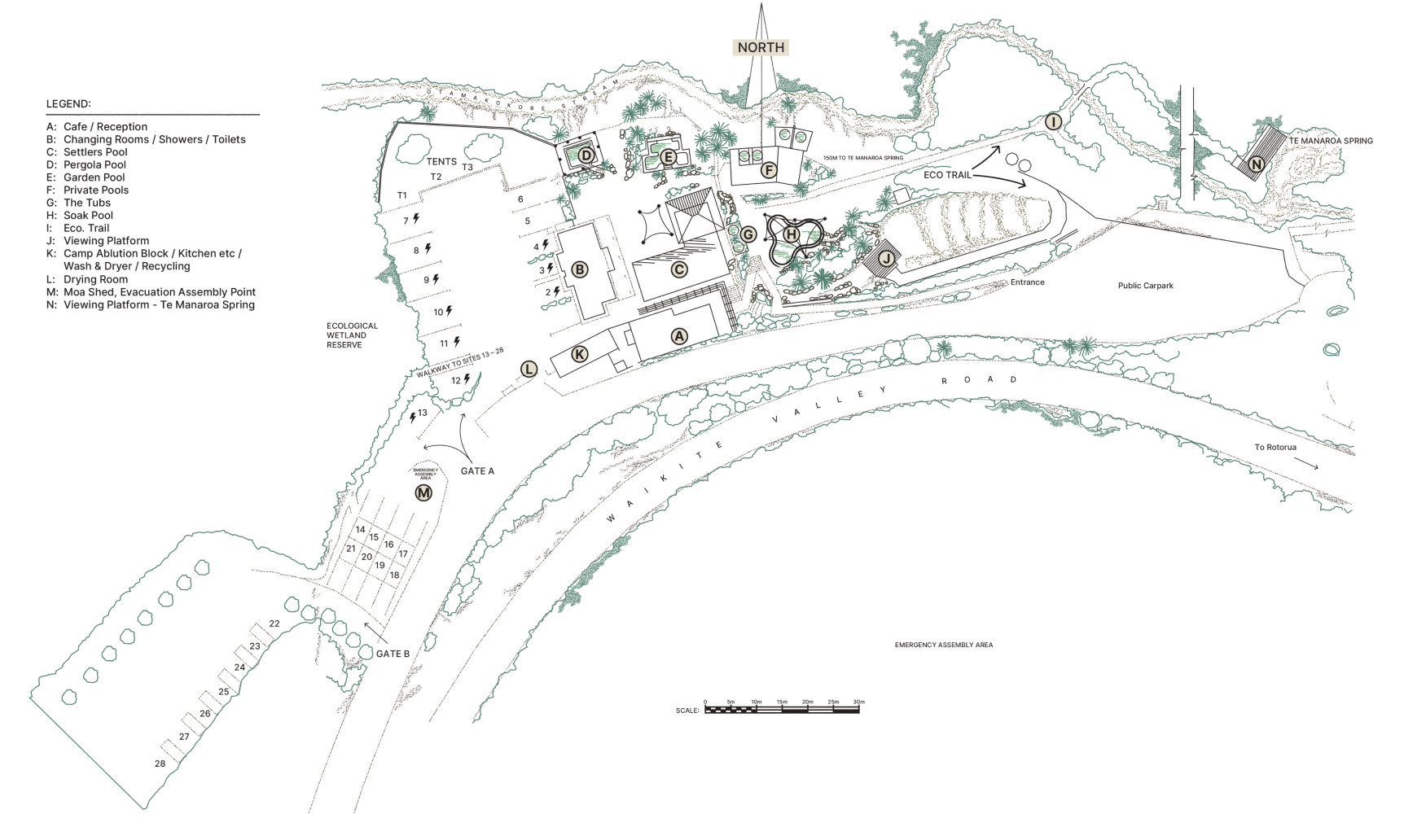The journey of our water starts here
Once the curtain of steam clears, take the opportunity to appreciate the true force of Te Manaroa Spring naturally bubbling away at 99 degrees celcius.
Witness the geothermal water begin the cooling process as it weaves its way down the lively gully and over the silica cascades before settling in our pools, which await bathers to soak and enjoy.
Book a StayTe Manaroa Spring Eco-Trail
Take a stroll on the Te Manaroa Spring Walkway and Eco-Trail (5- 10 minutes) to the largest single source of boiling water in New Zealand.
Experience the ‘Living Waters’ of Waikite Valley and see the violently magnificent Te Manaroa Spring as it discharges thousands of litres of geothermal energy into the Otamakokore Stream that winds its way downstream leaving a trail of calcite formations in its wake.
Of both geological and botanical interest, this informative educational Eco-Trail walk takes you to the Te Manaroa Spring. Along the way you will learn about ferns, mosses and formations only found in a few geothermal areas in the southern Rotorua area.
Book a Walk





Botanical Information
Some fascinating plant-life is found in and around this unique area from microorganisms to prehistoric mosses and even very rare species of fern.
The Christella fern is of significant botanical interest because although it is found only in a few geothermal areas south of Rotorua, it is also found in abundance in the rainforests of South America. The reason for this is that New Zealand, Australia and South America were once one land mass known as Gondwanaland, all sharing the same plant and animal life. When this land mass separated approximately 85 million years ago, the Christella fern was one of a very few species that survived the split!
There are also mosses present in the Otamakokore Stream. Mosses such as geothermal club moss are an ancient form of plant-life dating back some 360 million years. They represent an evolutionary step up from algae, one of the simplest life-forms on earth.
Enjoy our Eco-Trail and learn more about the fascinating life-forms which make our beautiful Waikite Valley so unique.






Microbiology and Geochemistry of Waikite Valley
The Waikite geothermal system contains over 35 springs spanning a distance of 1.5 km. The temperatures of these springs range from 30°C to 99.5°C.While these conditions appear uninhabitable to life, a group of microscopic organisms known collectively as extremophiles not only survive here, but actively grow!
Extremophiles include organisms from all three domains of life, Bacteria, Archaea and Eukarya, and are thought to be modern versions of the first forms of life more than 3.5 million years ago.
Extremophiles live in conditions unsuitable for human habitation, such as high temperatures, elevated acidity or alkalinity, and high levels of radiation or pressure.







